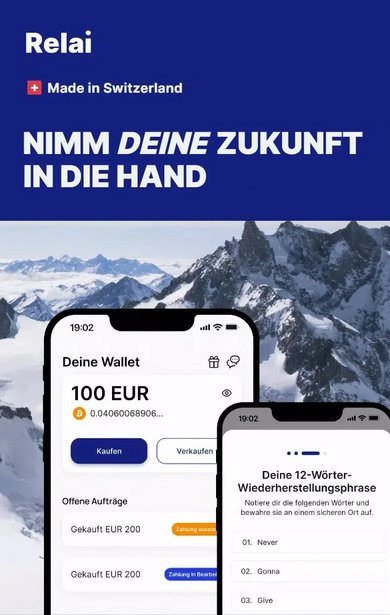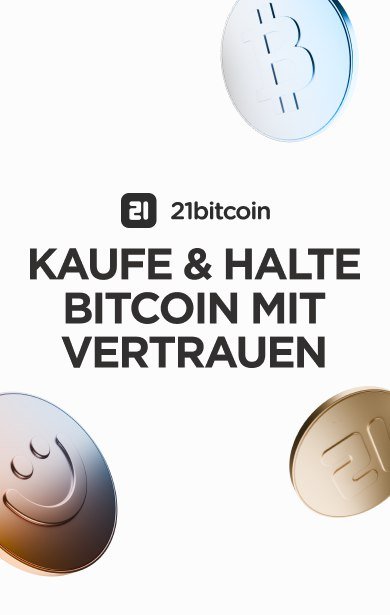What does "DCA" mean?
The savings plan effect explained simply!
What does "DCA" mean?
Recently, we have been hearing and reading about DCA and DCA services.
This article will briefly explain what these three letters are all about and why they might be relevant to you.
The most important facts in brief:
- DCA stands for Dollar-Cost-Averaging (dollar average cost effect)
- It is a savings plan strategy to compensate for the high volatility in the crypto market with regular purchases
- A good provider with DCA function is Relai.ch (with the code: BLOCKTRAINER you get a permanent 0.5 percentage point discount on the fees).
- The provider Pocket is a recommended alternative for savings plans.
What does DCA stand for?
DCA stands for dollar-cost averaging and is also known as the "average cost effect" or "savings plan". DCA is an investment strategy in which an investor divides the total amount to be invested into periodic purchases in order to reduce the impact of volatility on the total purchase. The purchases are made independently of the price of the coin or token and at regular intervals. In effect, this strategy eliminates much of the work of trying to time the market to make its purchases at the best prices. Especially in a market as volatile as the cryptocurrency market, this is a proven approach to avoid the enormous price fluctuations.
By taking advantage of the average cost effect, you rarely catch the best possible price within a time period to buy a coin/token, but you are also very likely to avoid buying at the worst possible time. There is also an old saying that is often used in traditional financial markets: "Time in the market, beats timing the market!", i.e. "it's how long you are part of the market that matters, not when exactly you enter".
If you constantly buy the cryptocurrency of your choice for a predetermined sum in dollars (or euros in this country) at predetermined times, you buy more of the corresponding coin when the price is low and proportionally less when the price is comparatively high. This - and the fact that the overall market trend is definitely upwards - results in steady growth of the invested capital in the long term.
Here is an example
I would like to briefly illustrate how the DCA strategy affects your investment. Let's assume a time horizon of five months and two people, A and B, who each want to invest €1000 in order to make a maximum profit after this time. In real life, the time horizon for DCA should of course be much longer and is more likely to be years or even decades, but with this short time span it is of course easier to demonstrate and understand.
Person A
Person A uses a savings plan and buys Bitcoin for €200 at the beginning of each month instead of a one-off investment of the entire €1000.
| Date | Price BTC | Amount invested | Quantity per amount |
| 1.01. | 10.000€ | 200€ | 0,02 |
| 1.02. | 8000€ | 200€ | 0,025 |
| 1.03. | 4000€ | 200€ | 0,05 |
| 1.04. | 8000€ | 200€ | 0,025 |
| 1.05. | 16.000€ | 200€ | 0,0125 |
| Total | 1000€ | 0,1325 |
At the end of the specified time period, person A would have turned €1000 into a total of 0.1325 BTC with an equivalent value of €2120 using this DCA strategy. Now let's see what options person B has.
Person B
| Date | Price BTC | Amount invested | Quantity per amount |
| 1.01. | 10.000€ | one-time 1000€ | 0,1 |
| 1.02. | 8000€ | one-off 1000€ | 0,125 |
| 1.03. | 4000€ | one-off 1000€ | 0,25 |
| 1.04. | 8000€ | one-off 1000€ | 0,125 |
| 1.05. | 16.000€ | one-off 1000€ | 0,0625 |
| Total | 1000€ | between 0.0625 and 0.25 |
Person B can achieve a maximum of 0.25BTC with the chosen strategy with an equivalent value of €4000, BUT only if B was actually lucky enough to have bought at the most favorable time on March 1st. In four out of five cases, B would have made less Bitcoin/Euro and thus less profit with a one-time investment of €1000.
"Peace of Mind" > Maximum profits
If you also consider the nervous stress that person B had, as he or she could never be sure whether the price would rise or fall in the coming weeks and months, person A's DCA is not only the more successful strategy (in most cases), but also the more relaxed one. Bitcoin is now referred to by many people as a "savings technology", as many people do not expect maximum profits from their investment, but rather a hedge against the threat of inflation.
For these people, dollar-cost averaging is a means of achieving peace of mind. After all, there are more important things in life than maximum profit.
DCA Services
Of course, you can buy Bitcoin manually for a fixed amount on the exchange of your choice at the times you specify. However, some exchanges, such as the Bison app, also offer the savings plan service directly. However, you do not automatically have the coins in your own custody here, as they are held on the exchange until the time of manual withdrawal. However, with the savings plan versions, you save the Bitcoin network fees and can then transfer the coins to your own wallet free of charge once a large sum has been accumulated on the exchange.
There are also stacking services such as Coinfinity. You only have to set up a standing order with this provider once and the Bitcoin is then sent to your wallet after each transfer - simply and securely. However, this can result in high fees in the long term due to the many resulting UTXOs if you want to send the Bitcoin away from your own wallet one day.
An alternative is the 21bitcoin stacking service, which combines an automated savings plan via permanent transfer with a wallet managed by the exchange.
To the technically experienced among you:
The developer Dennis Reimann (known for his work on the BTC payserver, among other things) has written a script with which you can make regular Bitcoin purchases automatically at Kraken.com . After all, "stacking sats", i.e. the regular accumulation of satoshis (the smallest unit of a Bitcoin) has become a credo of the Bitcoin community.
Dennis' script and instructions can be found at: https: //github.com/dennisreimann/stacking-sats-kraken
What is your situation like? Are you more type A or B? Do you try to time the market or do you also tend to follow an average price strategy? Feel free to discuss this with us in the free Blocktrainer forum.






